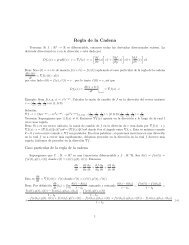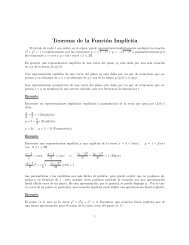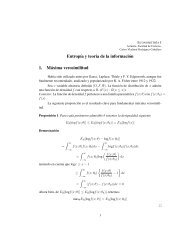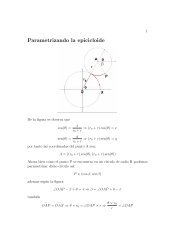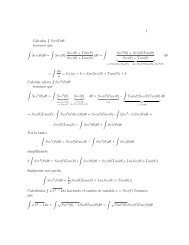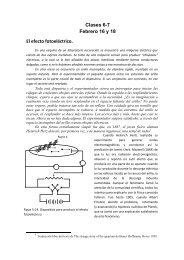"Surely You're Joking, Mr. Feynman!" - unam.
"Surely You're Joking, Mr. Feynman!" - unam.
"Surely You're Joking, Mr. Feynman!" - unam.
Create successful ePaper yourself
Turn your PDF publications into a flip-book with our unique Google optimized e-Paper software.
pronouncing the words, knowing what not to include in a paper or a seminar, and<br />
detecting a weak technique in an experiment. But I love physics, and I love to go back to<br />
it.<br />
Monster Minds<br />
While I was still a graduate student at Princeton, I worked as a research assistant<br />
under John Wheeler. He gave me a problem to work on, and it got hard, and I wasn't<br />
getting anywhere. So I went back to an idea that I had had earlier, at MIT. The idea was<br />
that electrons don't act on themselves, they only act on other electrons.<br />
There was this problem: When you shake an electron, it radiates energy, and so<br />
there's a loss. That means there must be a force on it. And there must be a different force<br />
when it's charged than when it's not charged. (If the force were exactly the same when it<br />
was charged and not charged, in one case it would lose energy, and in the other it<br />
wouldn't. You can't have two different answers to the same problem.)<br />
The standard theory was that it was the electron acting on itself that made that<br />
force (called the force of radiation reaction), and I had only electrons acting on other<br />
electrons. So I was in some difficulty, I realized, by that time. (When I was at MIT, I got<br />
the idea without noticing the problem, but by the time I got to Princeton, I knew that<br />
problem.)<br />
What I thought was: I'll shake this electron. It will make some nearby electron<br />
shake, and the effect back from the nearby electron would be the origin of the force of<br />
radiation reaction. So I did some calculations and took them to Wheeler.<br />
Wheeler, right away, said, "Well, that isn't right because it varies inversely as the<br />
square of the distance of the other electrons, whereas it should not depend on any of these<br />
variables at all. It'll also depend inversely upon the mass of the other electron; it'll be<br />
proportional to the charge on the other electron."<br />
What bothered me was, I thought he must have done the calculation. I only<br />
realized later that a man like Wheeler could immediately see all that stuff when you give<br />
him the problem. I had to calculate, but he could see.<br />
Then he said, "And it'll be delayed the wave returns late so all you've<br />
described is reflected light."<br />
"Oh! Of course," I said.<br />
"But wait," he said. "Let's suppose it returns by advanced waves reactions<br />
backward in time so it comes back at the right time. We saw the effect varied inversely<br />
as the square of the distance, but suppose there are a lot of electrons, all over space: the<br />
number is proportional to the square of the distance. So maybe we can make it all<br />
compensate."<br />
We found out we could do that. It came out very nicely, and fit very well. It was a<br />
classical theory that could be right, even though it differed from Maxwell's standard, or<br />
Lorentz's standard theory. It didn't have any trouble with the infinity of selfaction, and it<br />
was ingenious. It had actions and delays, forwards and backwards in time we called it<br />
"halfadvanced and halfretarded potentials."<br />
Wheeler and I thought the next problem was to turn to the quantum theory of<br />
electrodynamics, which had difficulties (I thought) with the selfaction of the electron.




